The Bükkalja is famous for its unique stone culture, due to its natural features. As a consequence of volcanic activity 10-20 million years ago, it is the largest area in Central Europe covered with volcanic rhyolite tuff and rhyodacite. Compared to other types of rocks, these can be easily carved and mined, so stones have always been an integral part of local life. You will find a magical stone world in the Bükkalja. There used to be several stone mines around here, and hundreds of cave homes, cave stables and wine cellars have been carved into the soft rock.

Where did all that stone go? Just look around in the villages and you will find the answer to your question. You’ll see houses, fences, bridges, crosses, benches, statues and gravestones, all made of these locally mined stones.
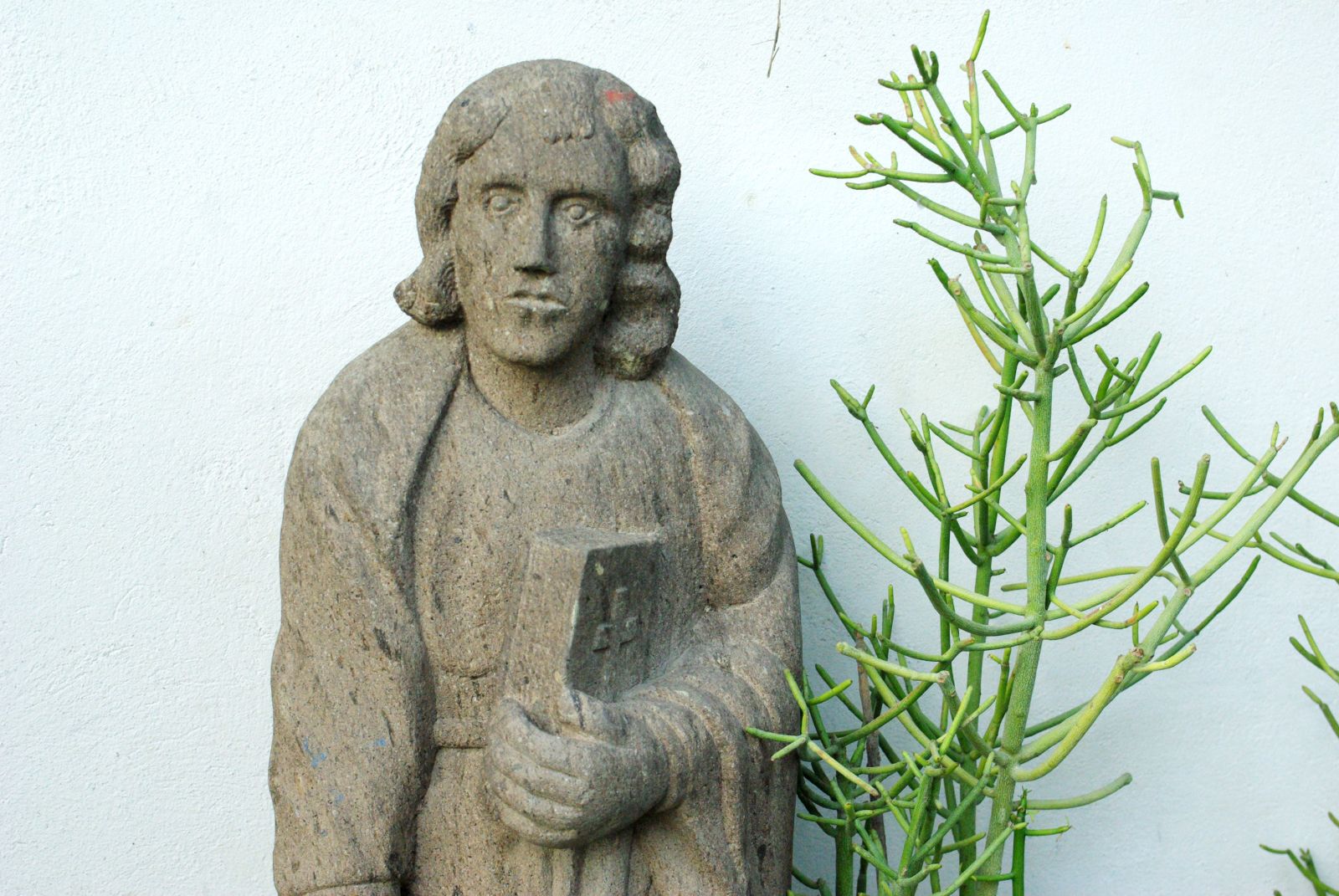
And of course, the Bükkalja is also famous for the mysterious beehives, whose secret has not been unraveled yet. Because of this unique natural environment and the strong connection between humans, nature and stones, the Bükkalja Region has been a Hungaricum since 2016.
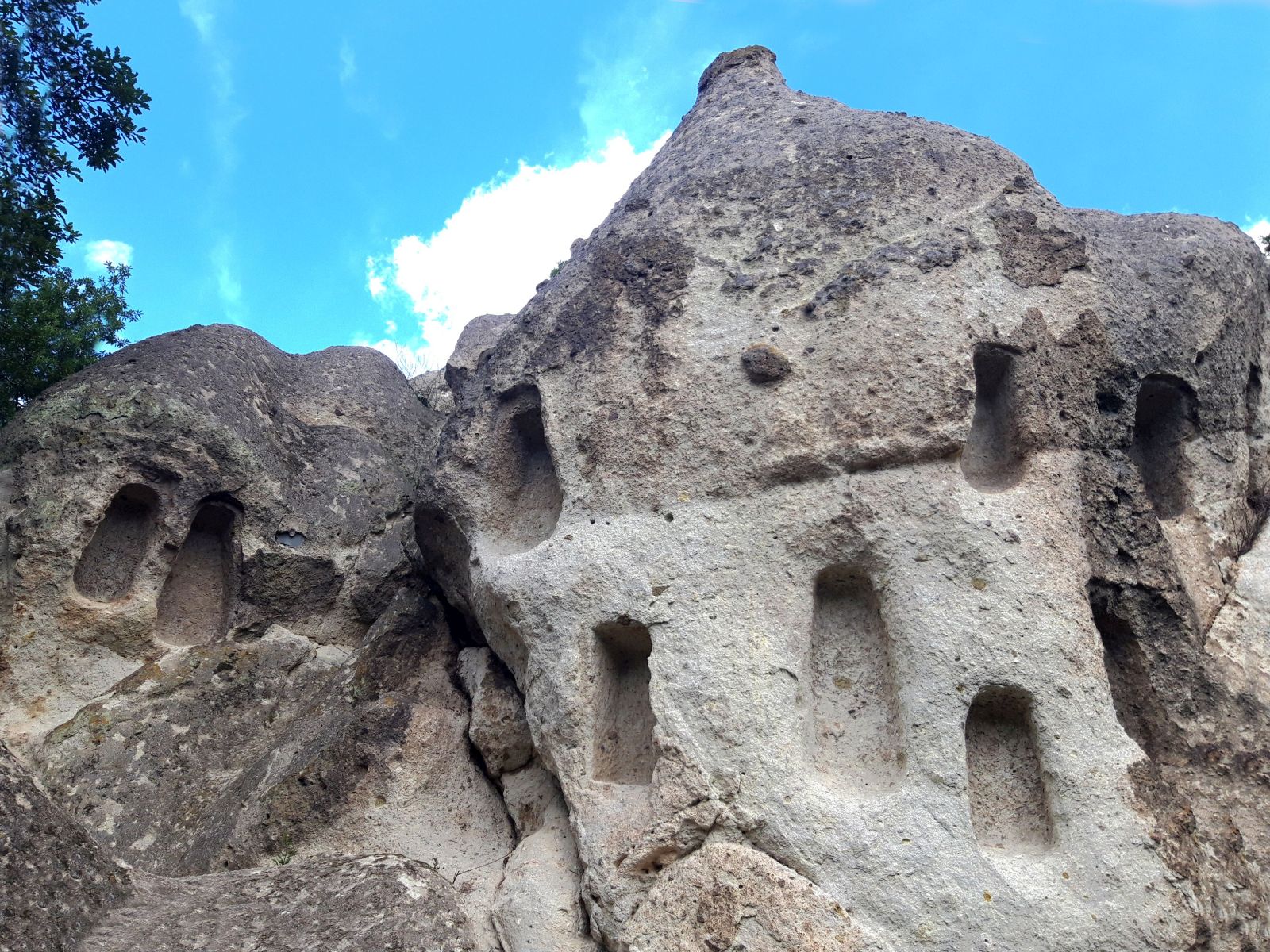
What happenned to the historical cave homes and wine cellars? Well, the wine cellars are still used by local wine makers, I will write more about it in the Wine section. The history of the cave homes is more exciting.
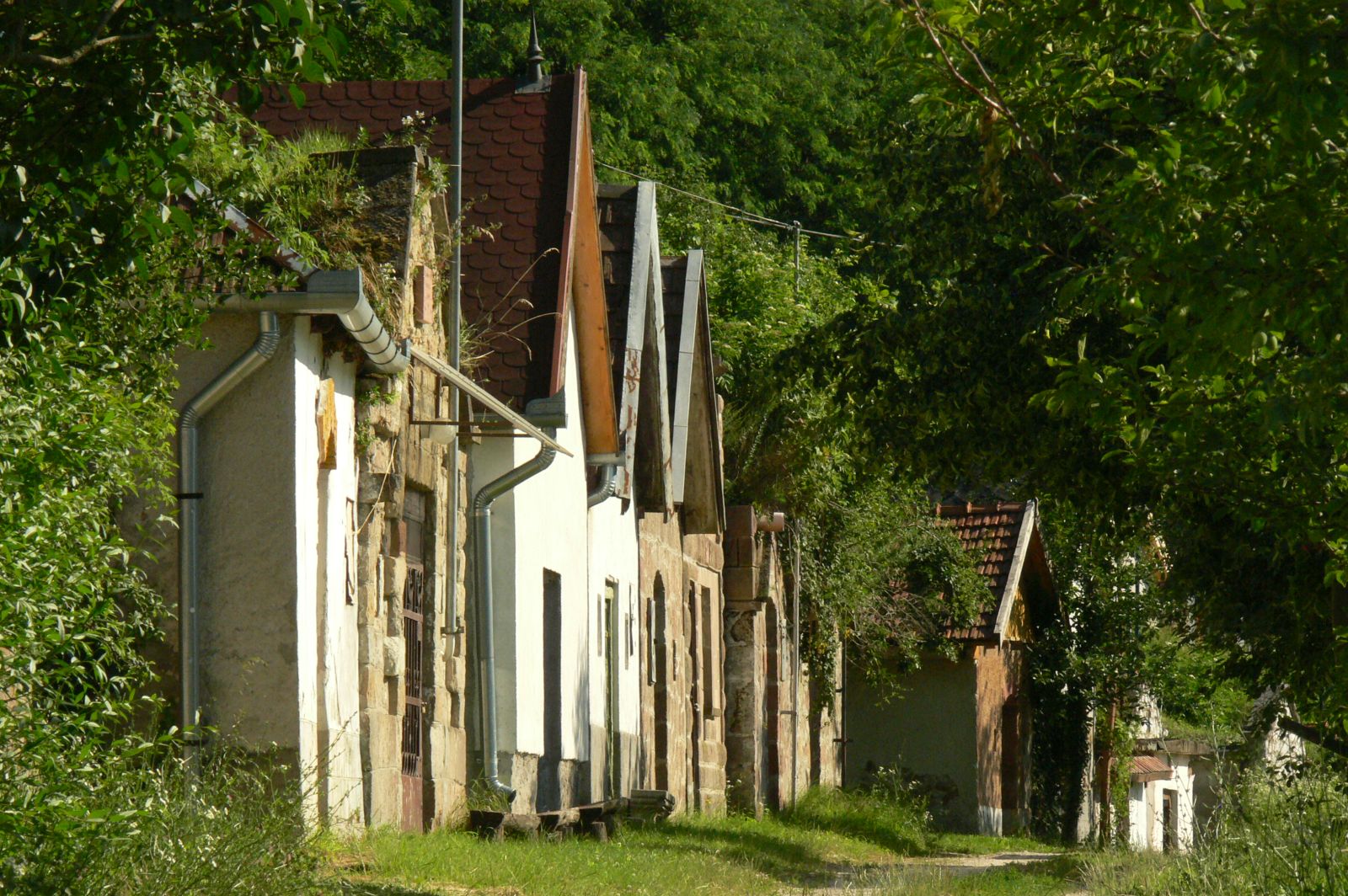
Cave homes
You might have heard of other cave towns in the world, like Matera in the south of Italy or Göreme in Turkey, but did you know that Hungary has hundreds of cave homes as well? Hungarians started to use them during the 160 years of Ottoman occupation of Hungary (1526-1686). It’s important to note that these are not natural caves, although we have many of those in Hungary as well, even beneath the surface of our stunning capital city, Budapest. The caves of the Bükkalja are man-made, lot of stone was extracted, used to reinforce the Castle of Eger, which played an important role in the fights against the Ottomans, then later to build the beautiful episcopal town of Eger. People started to use these holes to store food in the summer, hide their valuables or find shelter in case of a storm. Mineworkers stayed overnight in the caves so they were closer to their work place.
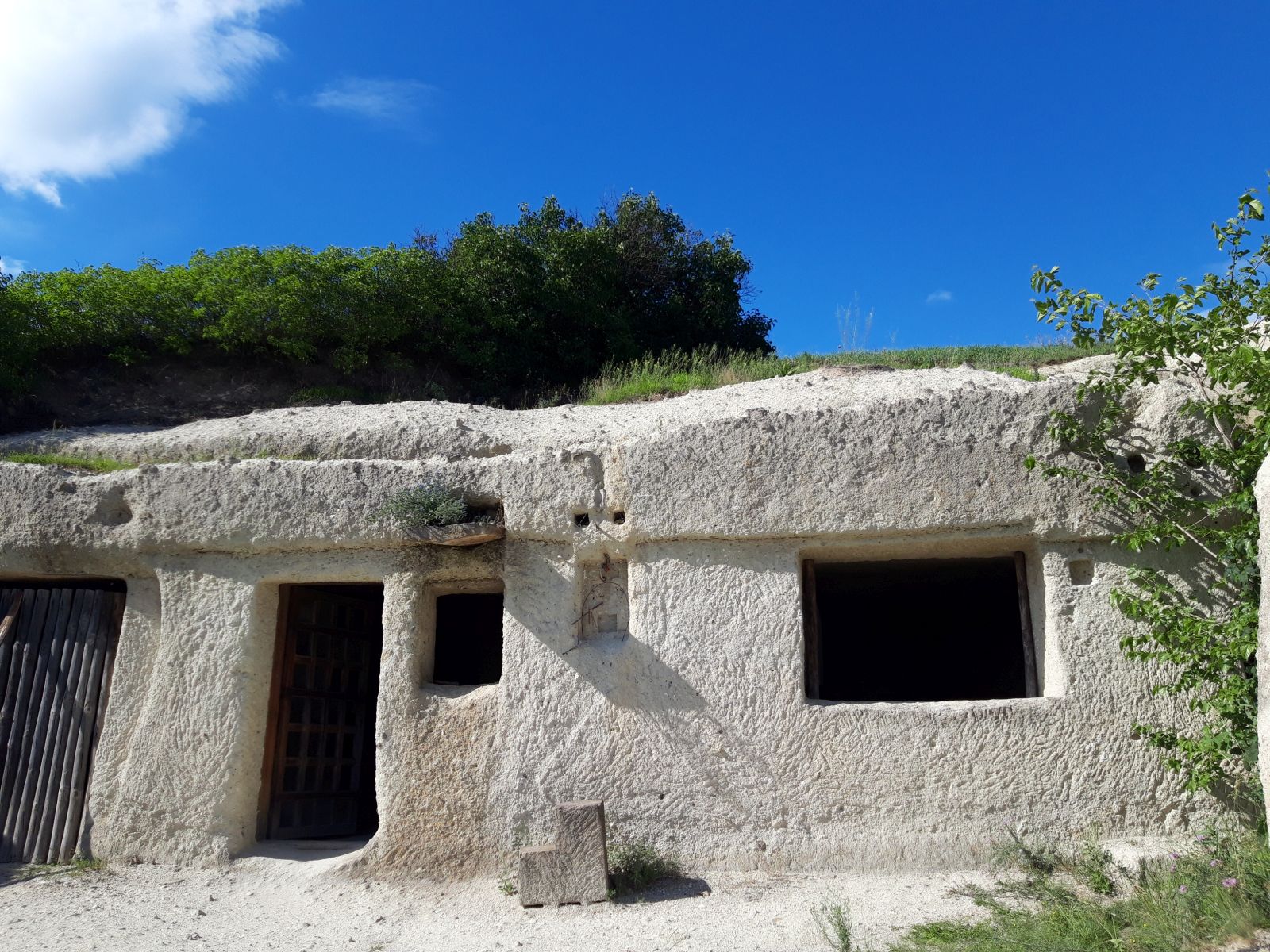
People slowly realized that they could use these huge holes inside the rocks as storage rooms, barns or homes. They usually created a kitchen with a chimney and one room where the entire family slept together. This was the traditional layout of the typical Hungarian houses as well, which you can see throughout Hungary.

There were about 1000 homes like this in the Bükkalja, and even in the 1970s people lived in some of them, under very simple conditions, until they were forced to leave and move into proper houses. If you ask these people today, they will tell you that they actually liked living in the caves. No building costs, no rent to pay, low overheads. It was easy to heat them, the thick rock walls kept the heat inside, while during hot summer days they were nice and cool. Some of these caves are totally abandoned, while others have been renovated, like those of the artist colony in Noszvaj. A group of artists have started to use the caves in Noszvaj at the end of the 1990s. Some caves function as apartments for the artists, while others are used for sculptor workshops. The place is called Pocem and it is a center for international symposiums. It can be visited for a small admission fee.
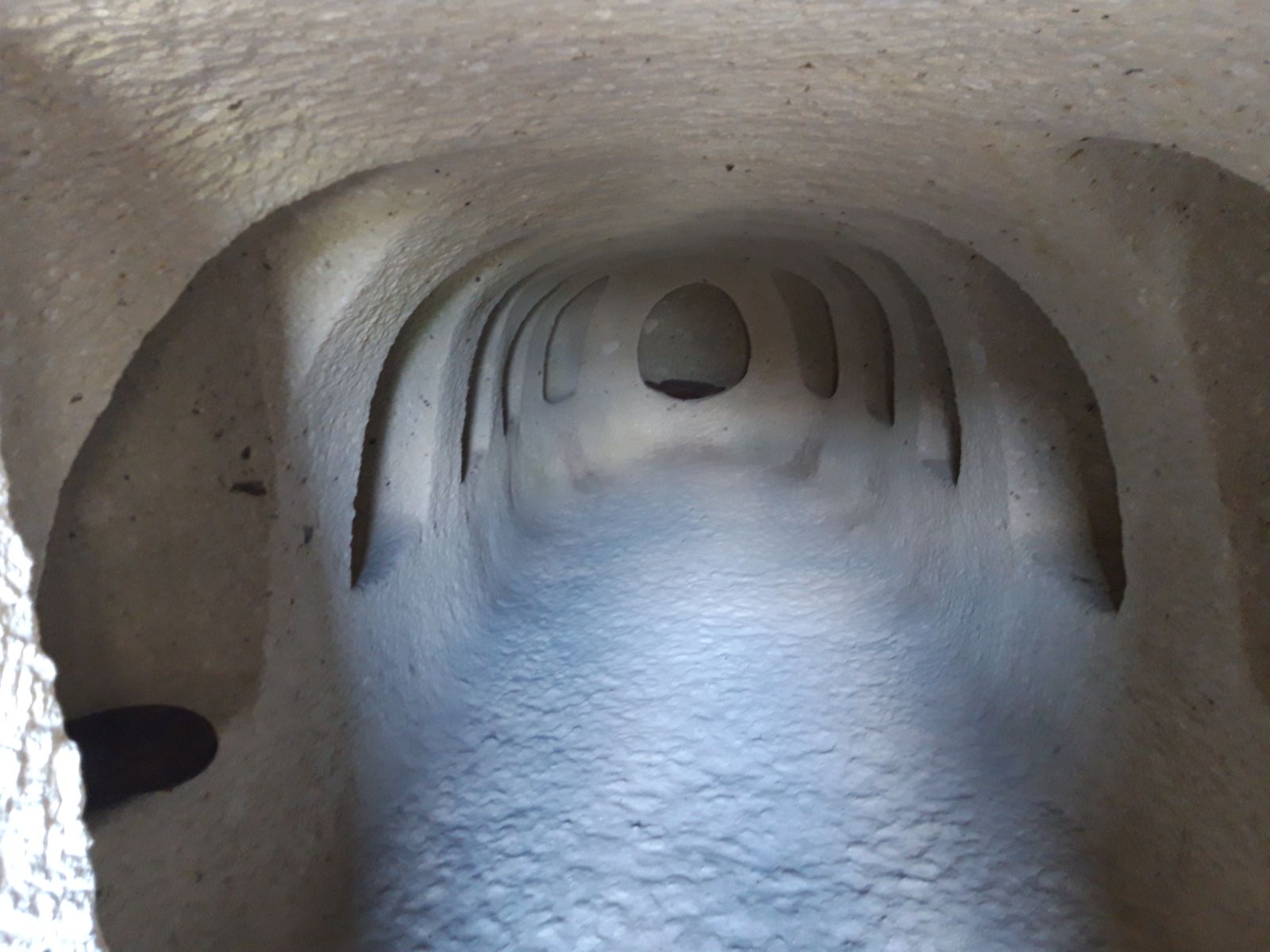
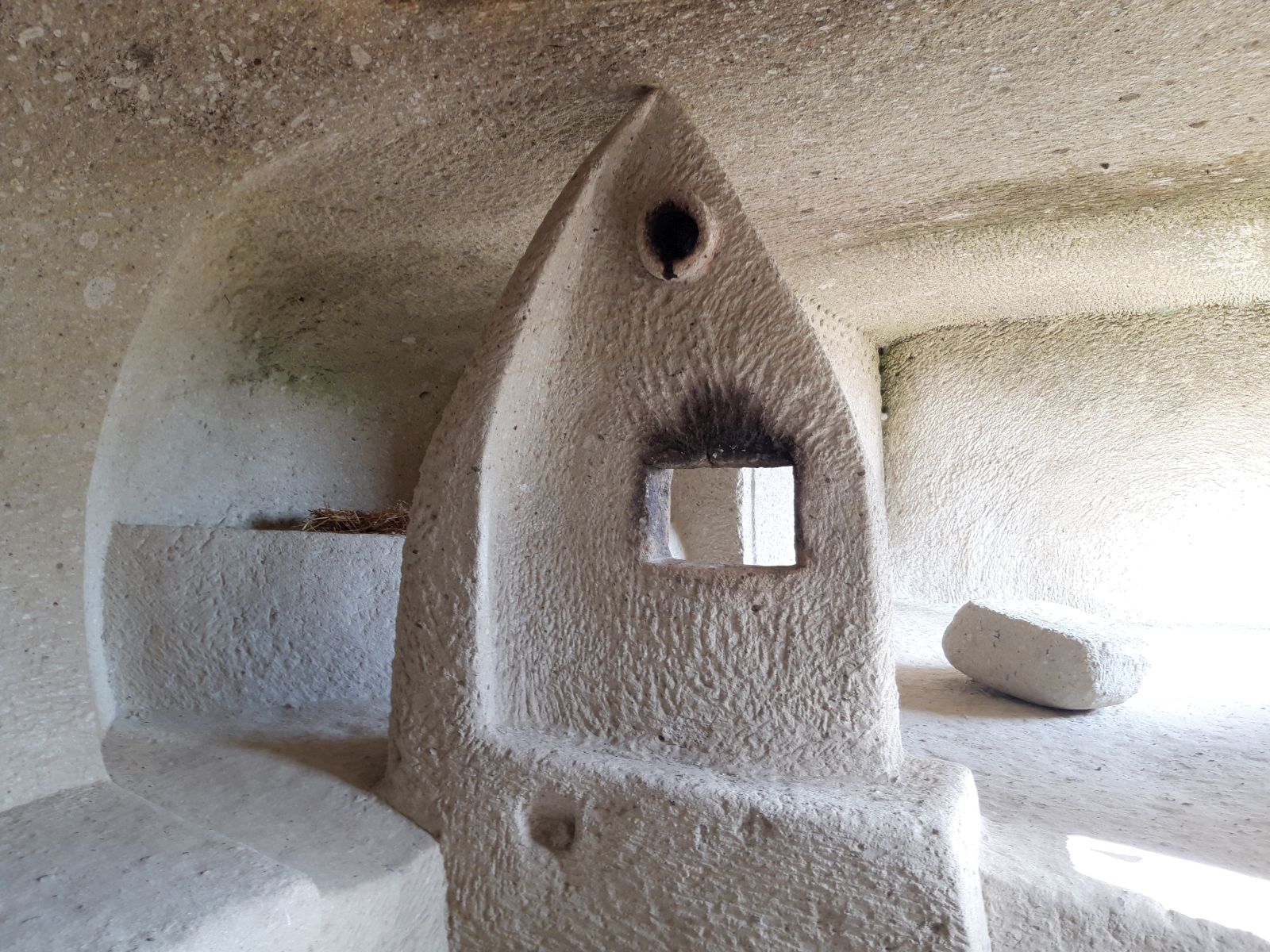
In Tibolddaróc about 1500 people lived in hundreds of cave homes above the village, making it one of the biggest communities of this kind in Hungary during the first half of the 20th century. It was almost like a proper village with streets, and the caves were located on 7 levels. Fun fact: the biggest system of cave dwellings was actually created in the village of Budafok, now part of Budapest. Today it’s mainly used to store wine, and it’s home of Törley, the most important sparkling wine producer of Hungary.
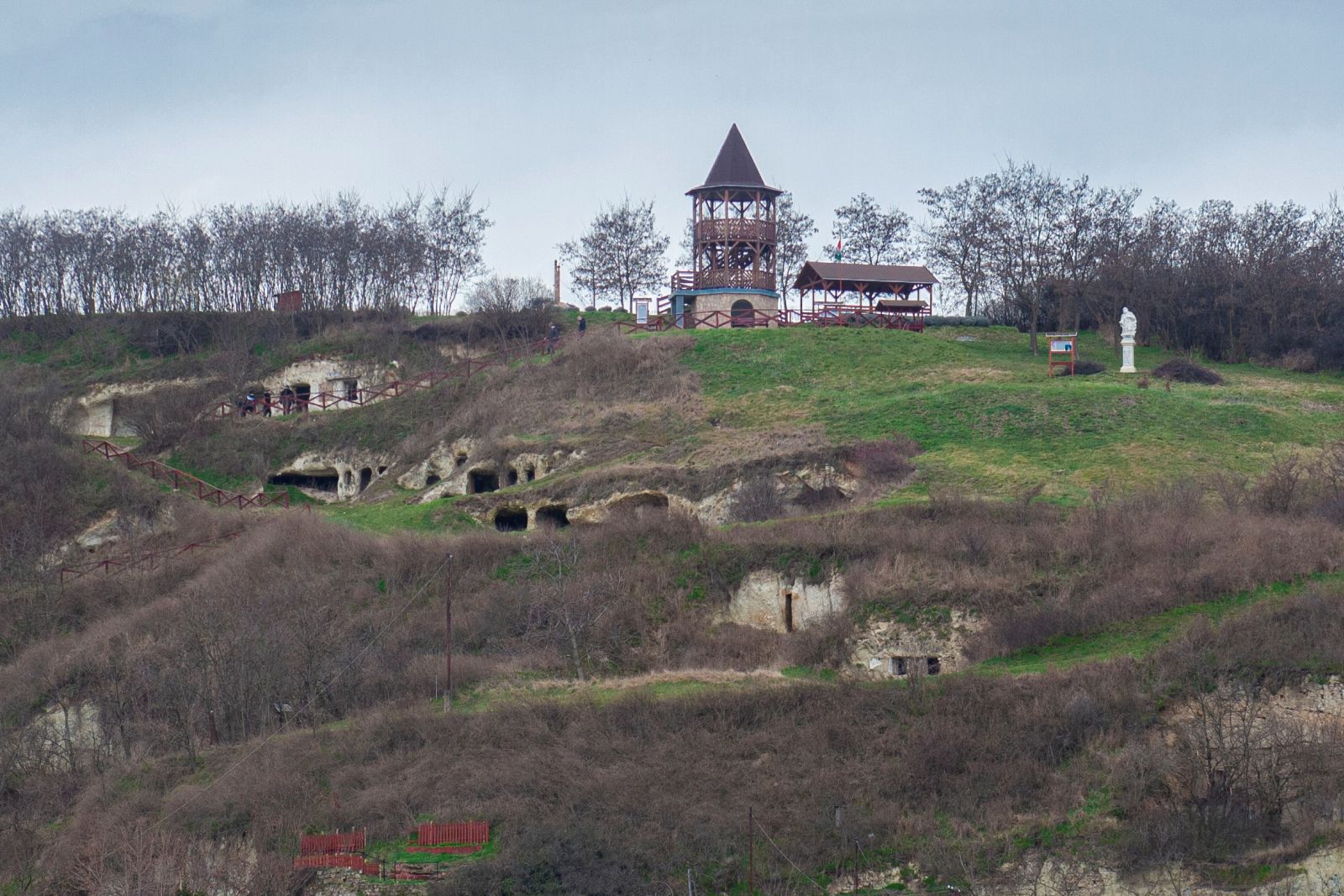
Tibolddaróc was a surprise for us, to be honest, we have never heard of this village before. From the village center drive up, or even better, walk up to the top of the hill, to the lookout tower. Along the road you will find numerous wine cellars with old wooden doors of green, blue and brown. Just below the tower you can visit a large area of abandoned cave homes. They are open and you can visit them for free, at your own risk of course. It’s interesting to see these caves without renovation. Some walls were painted into green, grey or orange. You can see chimneys and shelves carved into the rock, bigger and smaller rooms, tiny holes for storage, doors and windows. Looking out through the windows you can enjoy a beautiful view of the village below and the surrounding green countryside.

In 1936 new houses were built in the village and part of the people were moved from the caves to the houses, especially families with more children. However, when these children grew up, they often moved back to their cave homes with their own families. To prevent this, local authorities exploded some of the caves, and they planted a special plant in the area, because its roots get into the rhyolite tuff and make it fall apart. In 1955 new modern houses were built, so several families could move into a proper home. The last cave inhabitant was an old man, who died in 1986.
The cave homes in Egerszalók were carved out during the 17th century and people lived in them even in the 20th century. Today they are part of an open air museum and you can visit them. You can also find a cave house museum in Cserépváralja.
Most of the inhabitants of Cserépfalu also lived in cave homes, which were carved into the rock in the 1920s. This group of caves has the nickname Kisamerika (Small America), because while the wealthier residents of the village emigrated to America, the poor people moved to the caves, so only got as far as Small America.
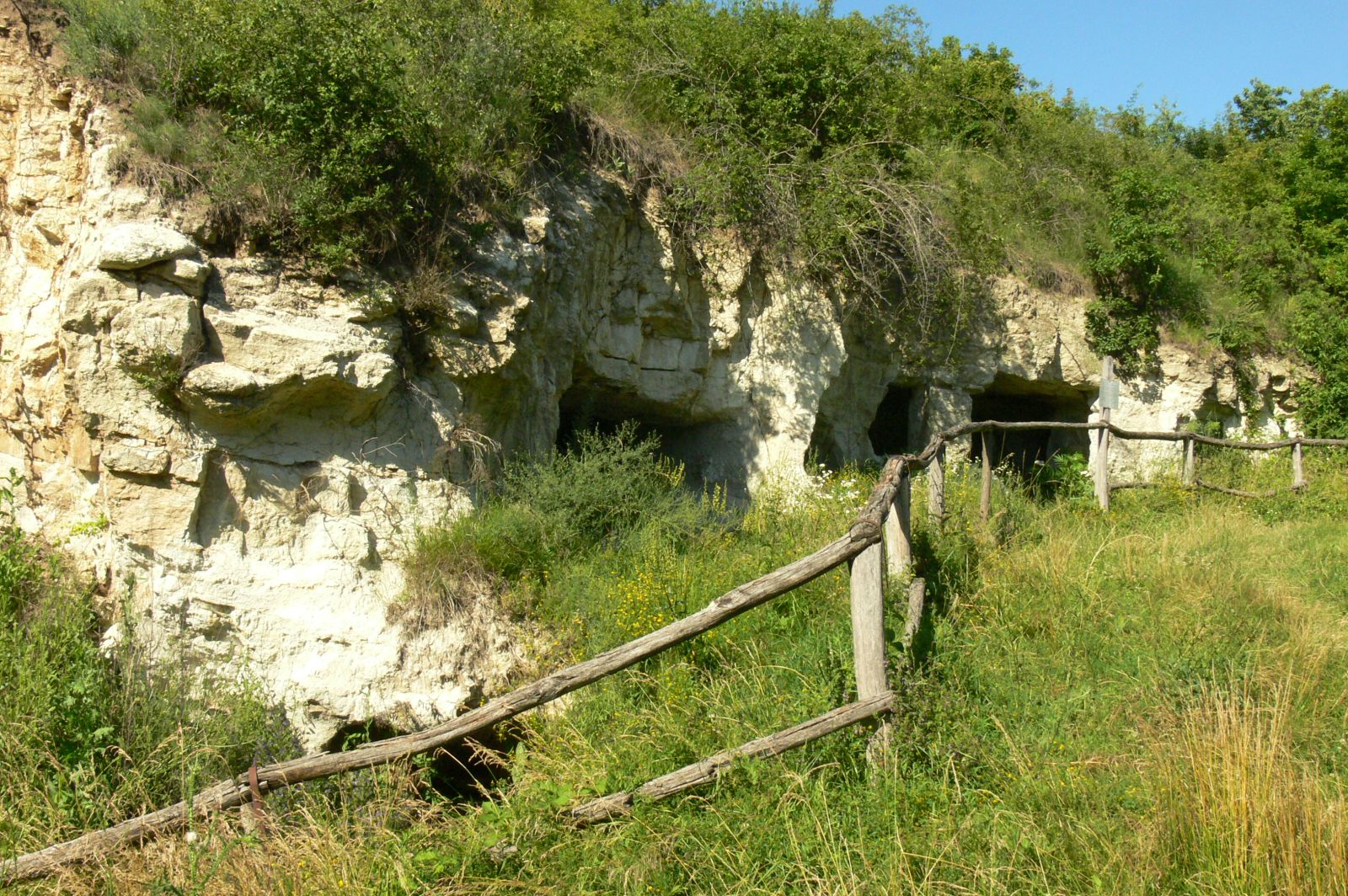
Another nice example is a house in the village of Szomolya, turned into a museum. These caves date back to the 18th century and the last people moved out in the 1980s. There used to be 2 homes here and a stable. Today it is a national monument. Inside the museum you can get a feeling of how people lived here, and you can also see some traditional Hungarian furniture, tools and other objects. To get into the house you need to call the phone number on the gate, or stop by at the Mayor’s office, someone will join you and show you the house.
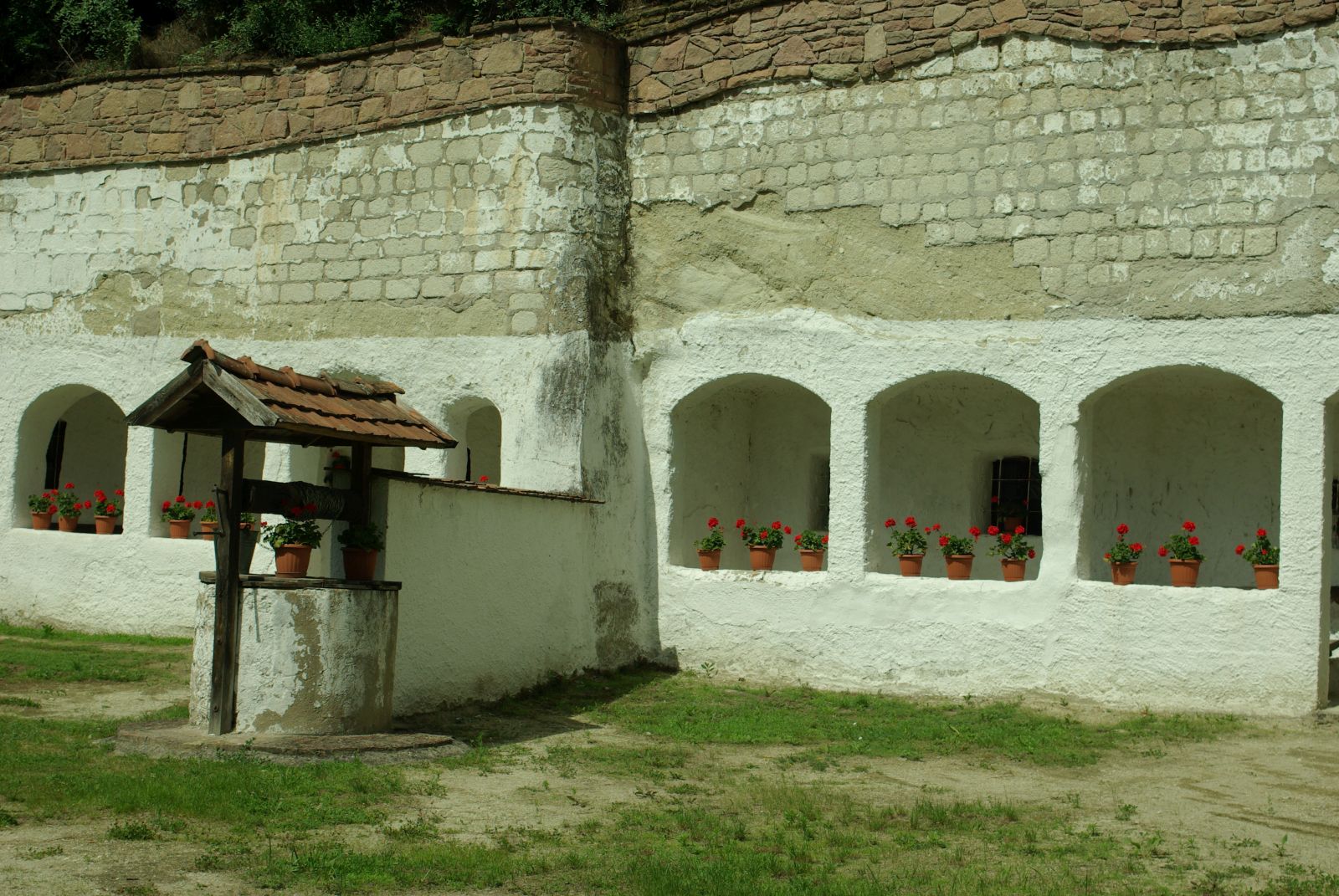
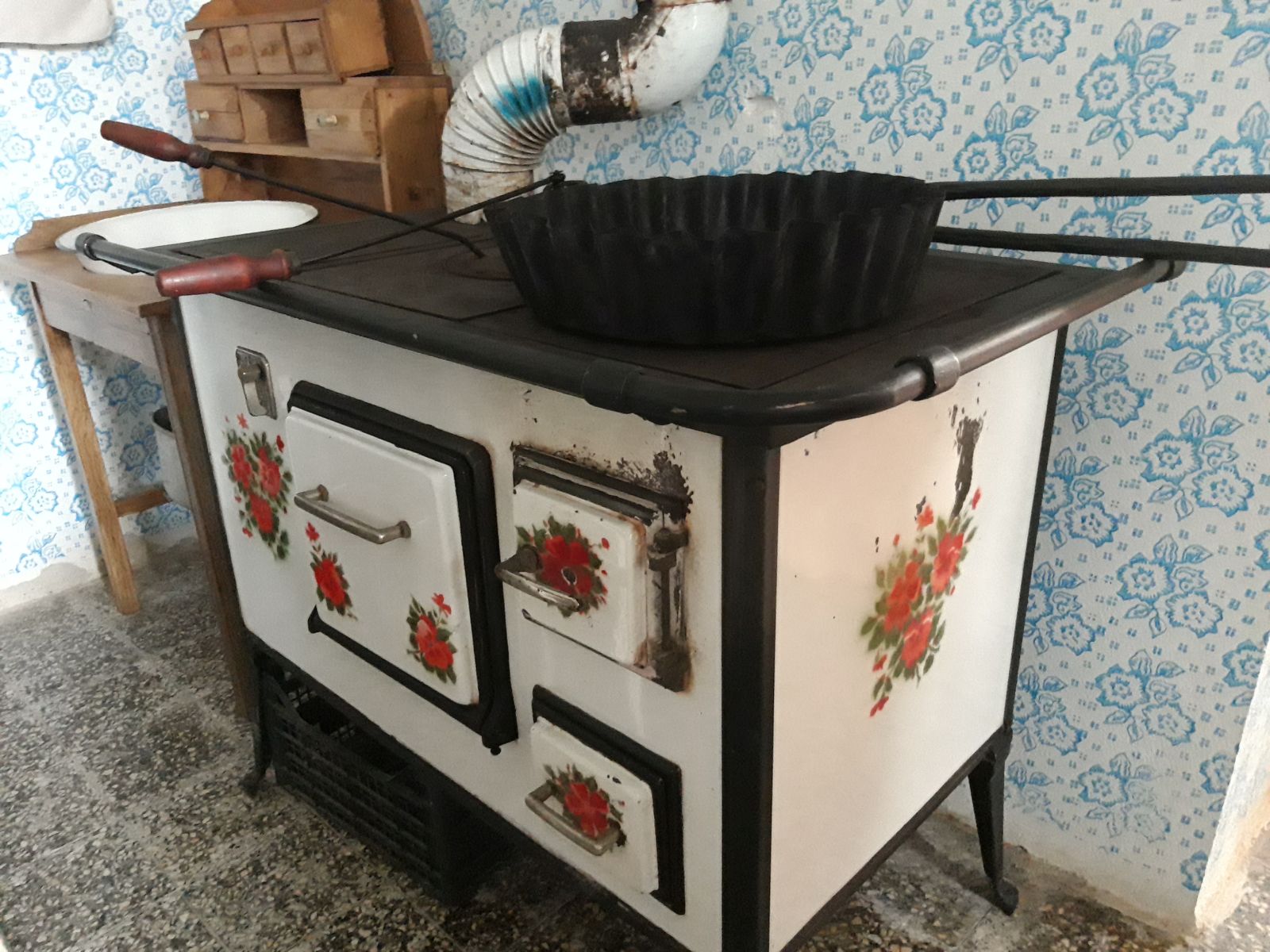
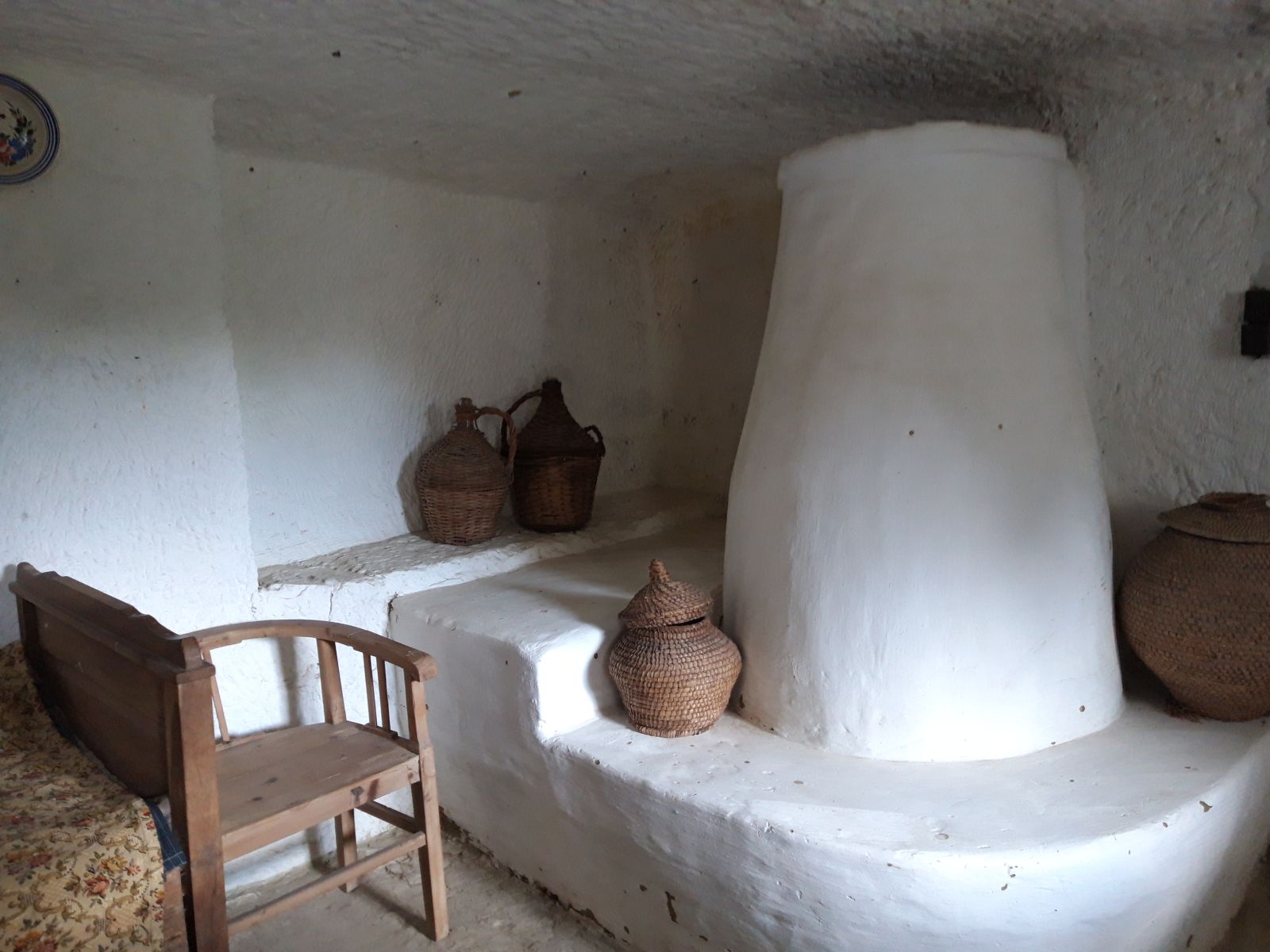
After visiting the museum we got lucky, as we met Ilona, the Mayor of Szomolya by accident. I told her about the project I was working on and about our interest in caves and stones, so she offerred to take us to the local cave hotel. I have seen similar projects in Matera, Italy, caves turned into luxury hotels and restaurants, so I was really excited to see something similar in Hungary. An enthusiastic local man bought a land full of deserted cave homes and started to renovate them. There is still a lot to do, but the hotel is already open, a few rooms can be booked and it really has a unique atmosphere. All is carved out of the tuff rock, beds, kitchen and the shower as well. There is a huge open area for socializing with table tennis, darts and ninepins, but guests can also relax on the terrace full of hammocks. At the end we climbed up to the roof terrace from where you can enjoy a beautiful view of the village and watch the sunset.
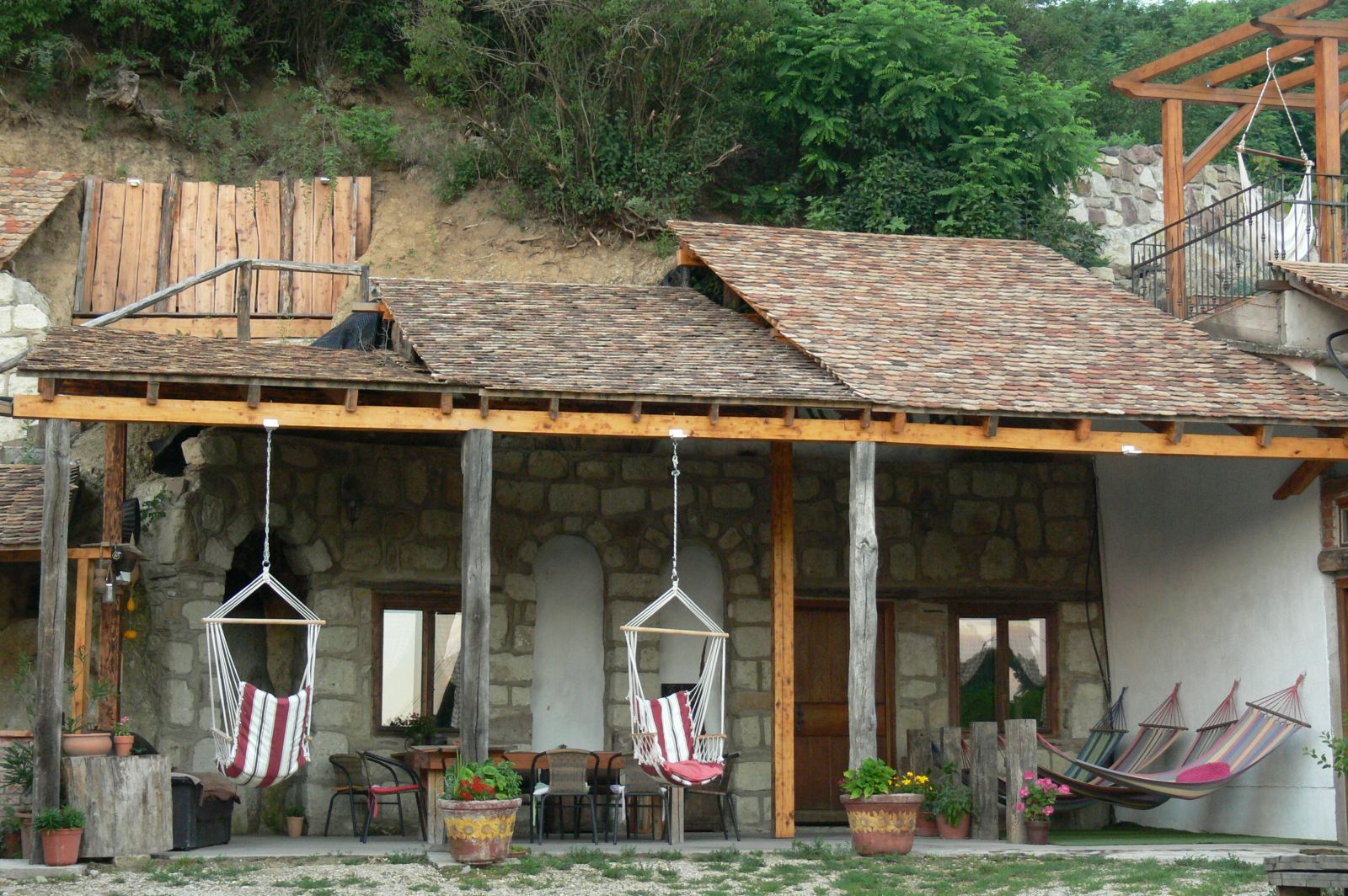




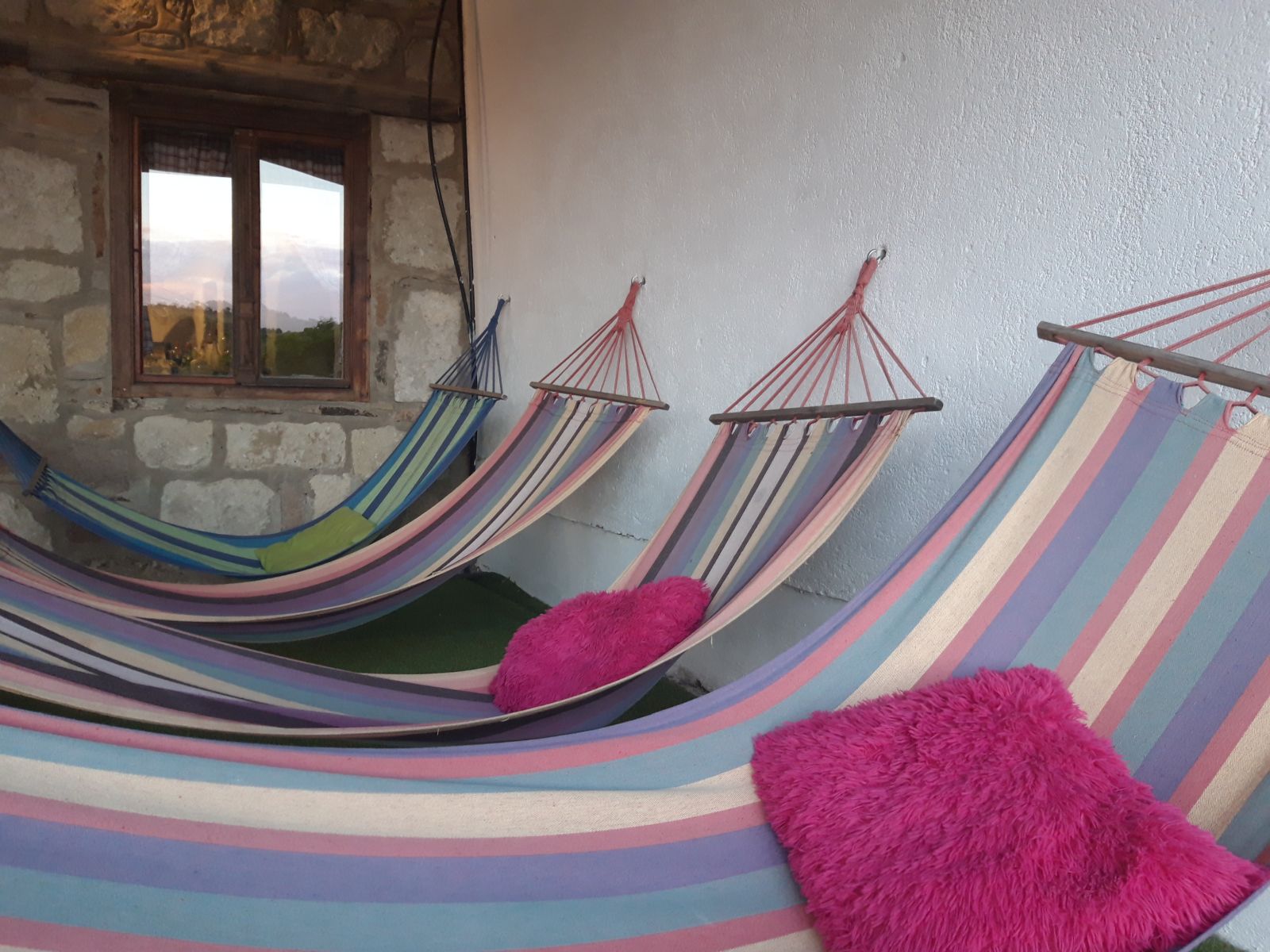
You can actually find several nicely renovated cave homes in the area which can be rented. So if you’d like to stay in a unique accommodation, let me know, and I can help you book your own private cave. Your kids will surely love it, they can enjoy their own Flintstones time here.
Masters of stone carving
With all these caves created, there was lot of stone available in the villages, easy to format. People basically had their own stone mines in their fields, so they could use the stone to build their houses. While in many parts of Hungary only churches and the castles of noble familes were built of stone, and poor people lived in houses made of mud bricks, in the Bükkalja villages almost everyone had the chance to build the house out of stone. They carved the stones and built the walls without using cement. Many of these walls have survived hundreds of years. Walking around the villages you will also see numerous stone fences, small bridges and different statues.
We also visited the cemetery of Szomolya, which is located in the center of the village, near the church. It’s really worth a visit as you can see many old gravestones, traditionally carved out of the rhyolite tuff. If you have the energy, walk up to the top of the cemetery for a nice panorama over the village. Again, we were very lucky, as we met a local lady there, who turned out to be an art historian and was an expert of the gravestones of Szomolya. She took us around the cemetery and explained all about the motifs on the stones as well as the stone culture of the area.
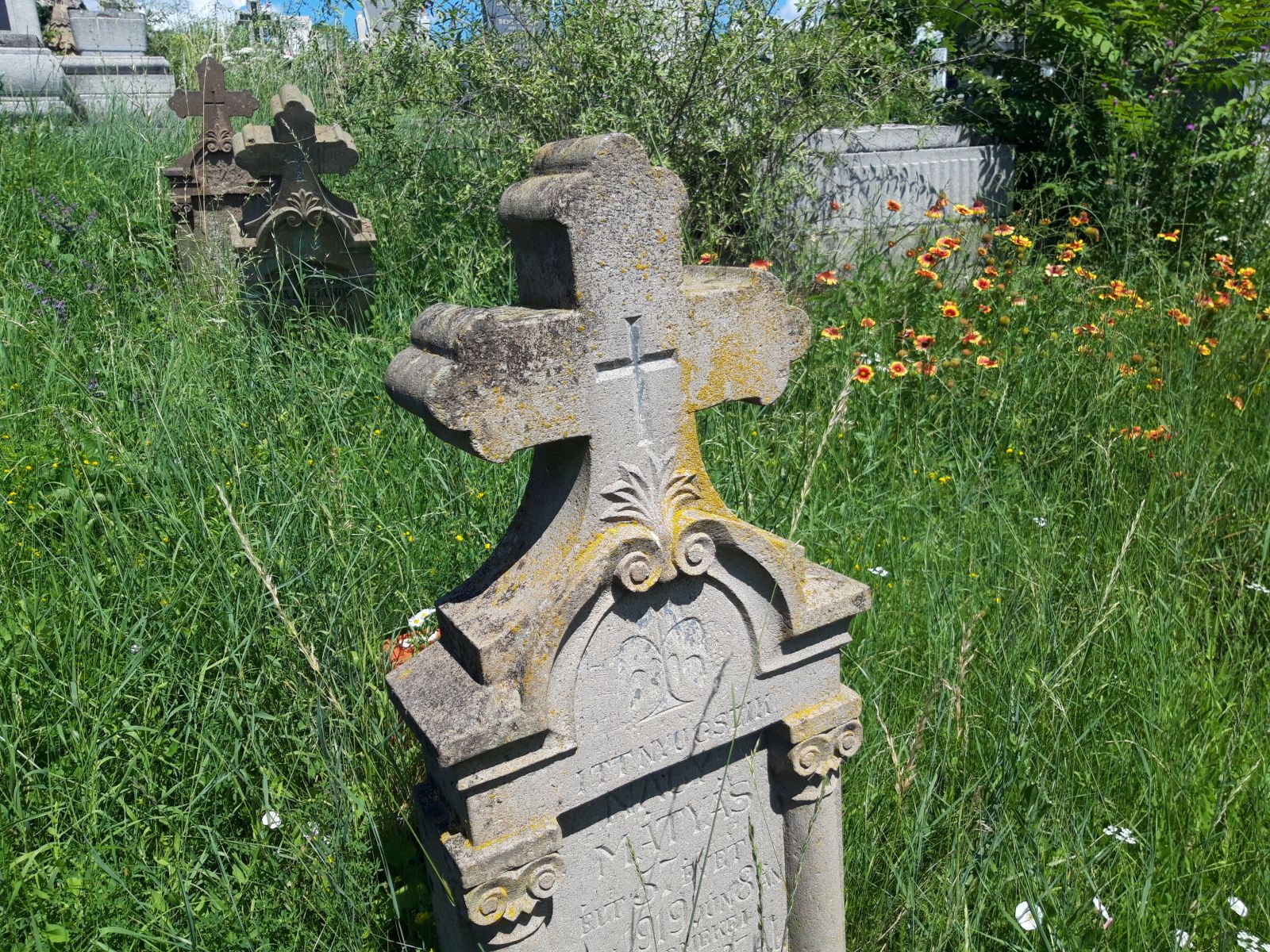


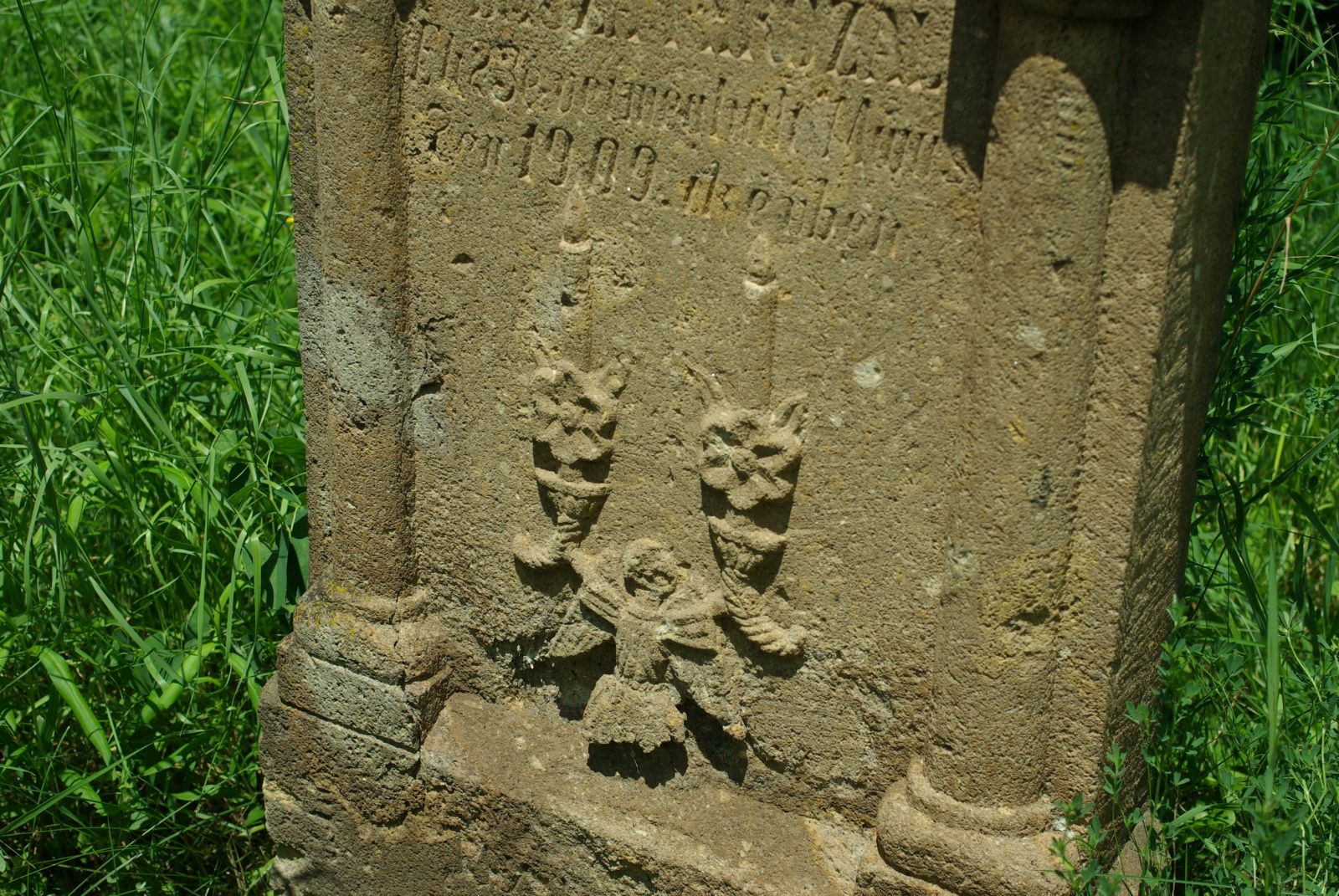
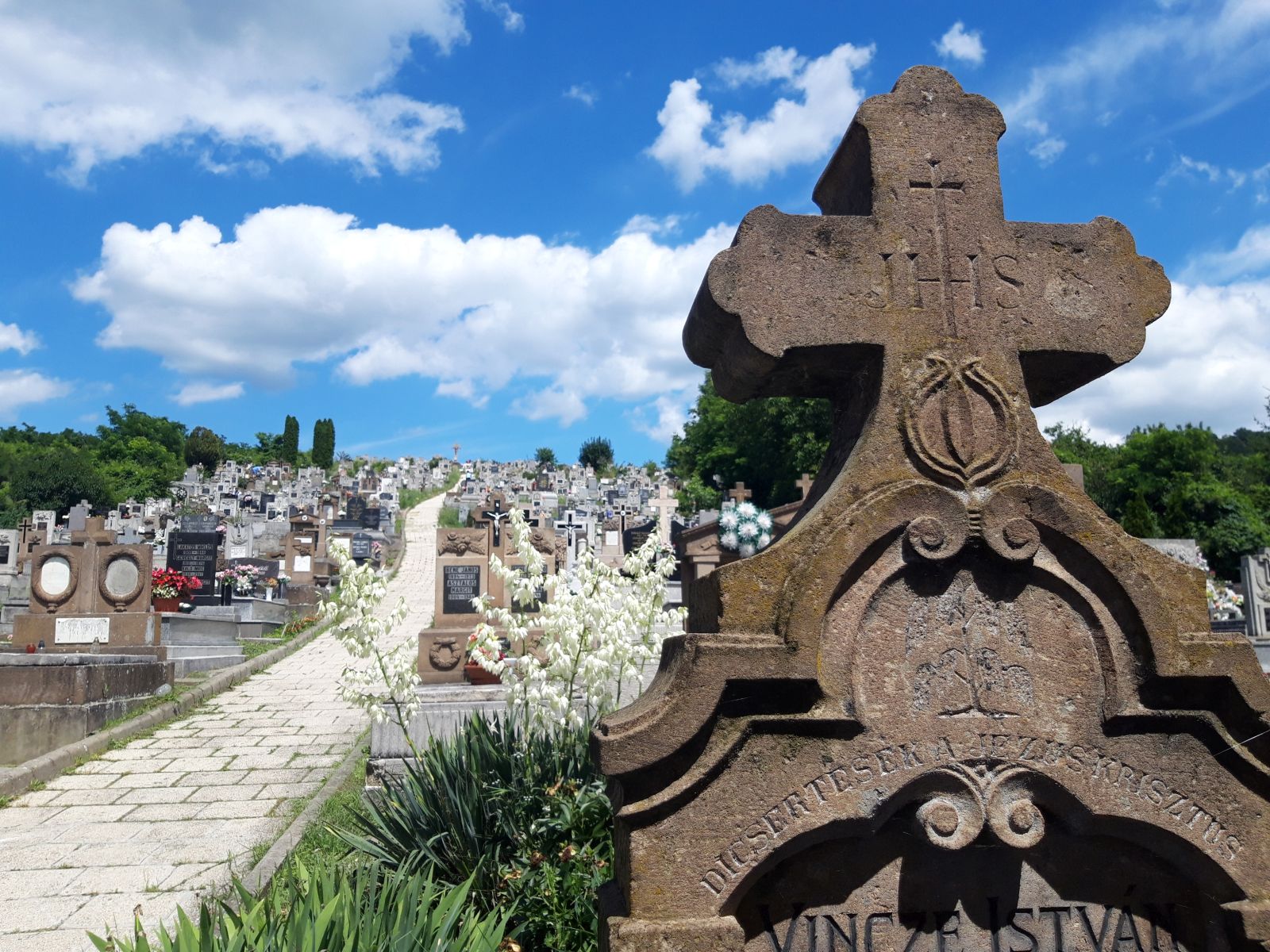
Not far from the church, in the garden of the potter’s house, you can see a carved stone collection from the past of Szomolya, from the beginning of the 20th century. Among the stonemason families of Szomolya, Márton Szalóki was the most famous master. The secrets and skills of stone carving were passed on from father to son, boys working with their fathers from a very young age. They mainly carved religious sculptures and gravestones, the cemeteries of Eger and Mezőkövesd are full of their work as well. Stone carving was a hard work, but it also paid much better than working on the fields.
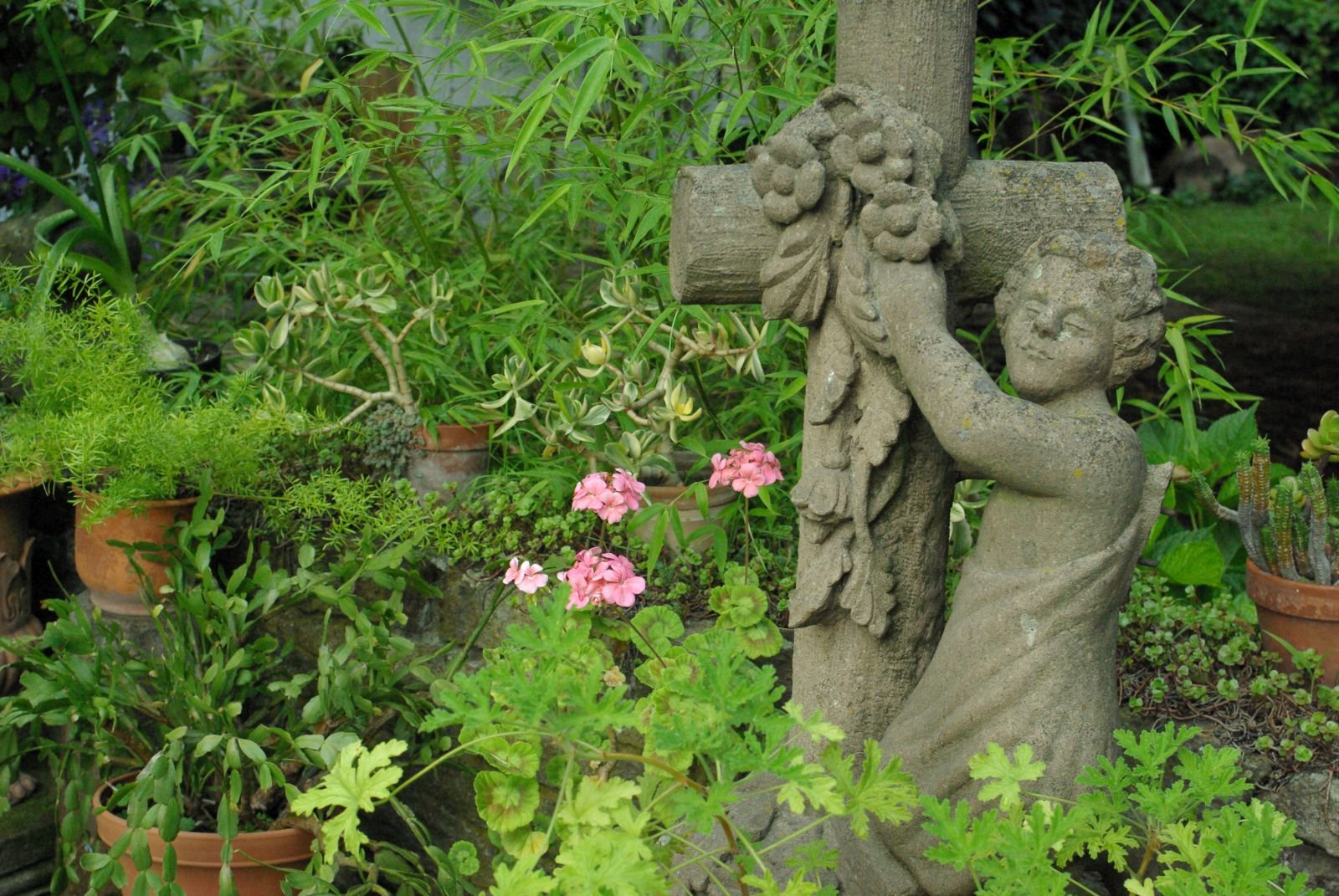
If you go to Bogács, make sure you visit the Roman Catholic Church of Saint Martin. The church dates back to the 13th century and was built from the locally mined rhyodacite.

In the area of Cserépfalu the Milleniumi kilátó (lookout tower) is also made of stone, and offers a beautiful view of the area. You can reach it with a short hike from the village. The form of the lookout tower reminds us of a beehive, while the small windows represent the niches.

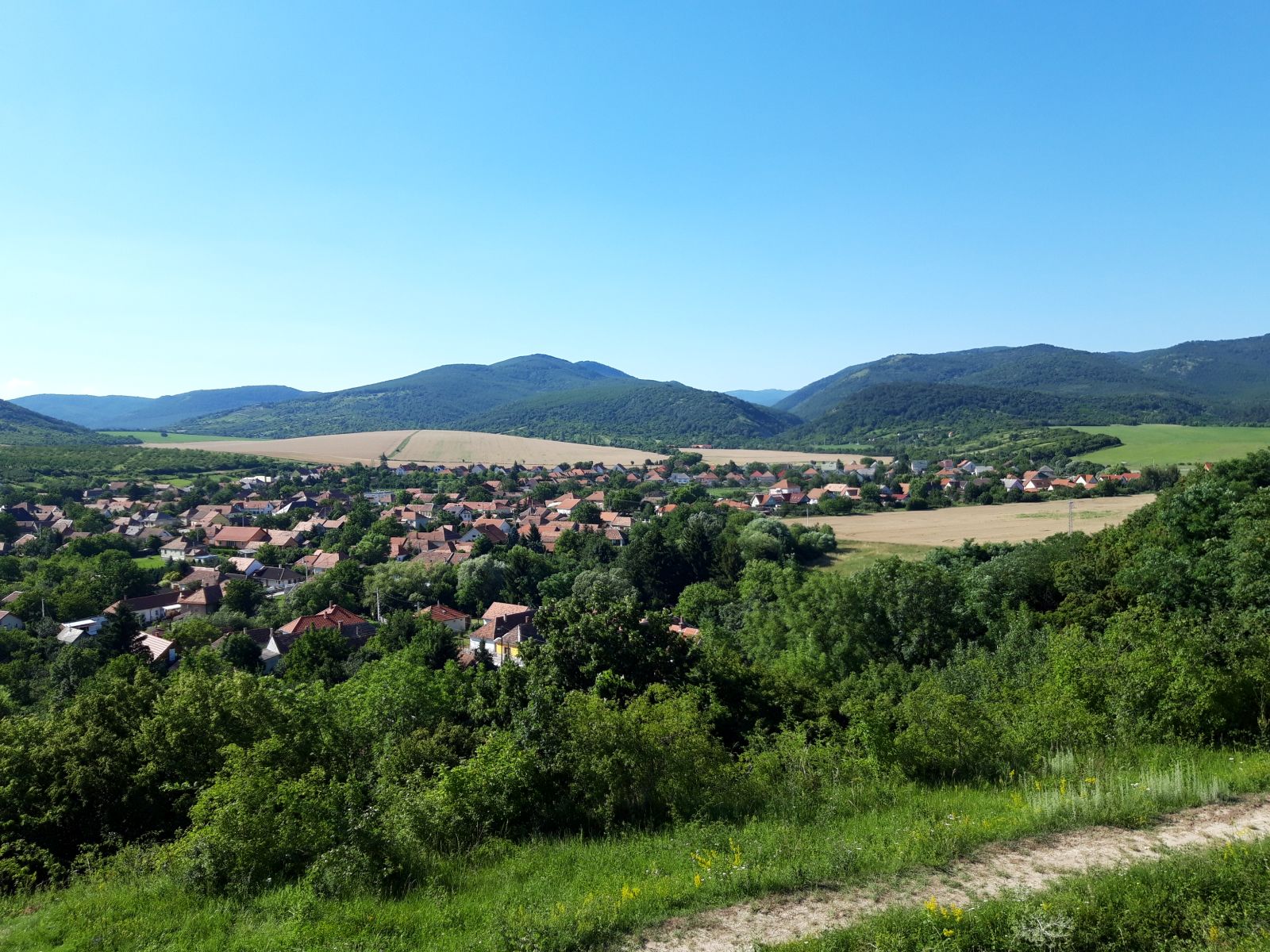
Beehives
These particular, cultic rock formations with niches can be found all over the Bükkalja, and they represent a cultural and geological value as well. You can find 82 rock formations in 41 different locations, with appr. 500 niches.
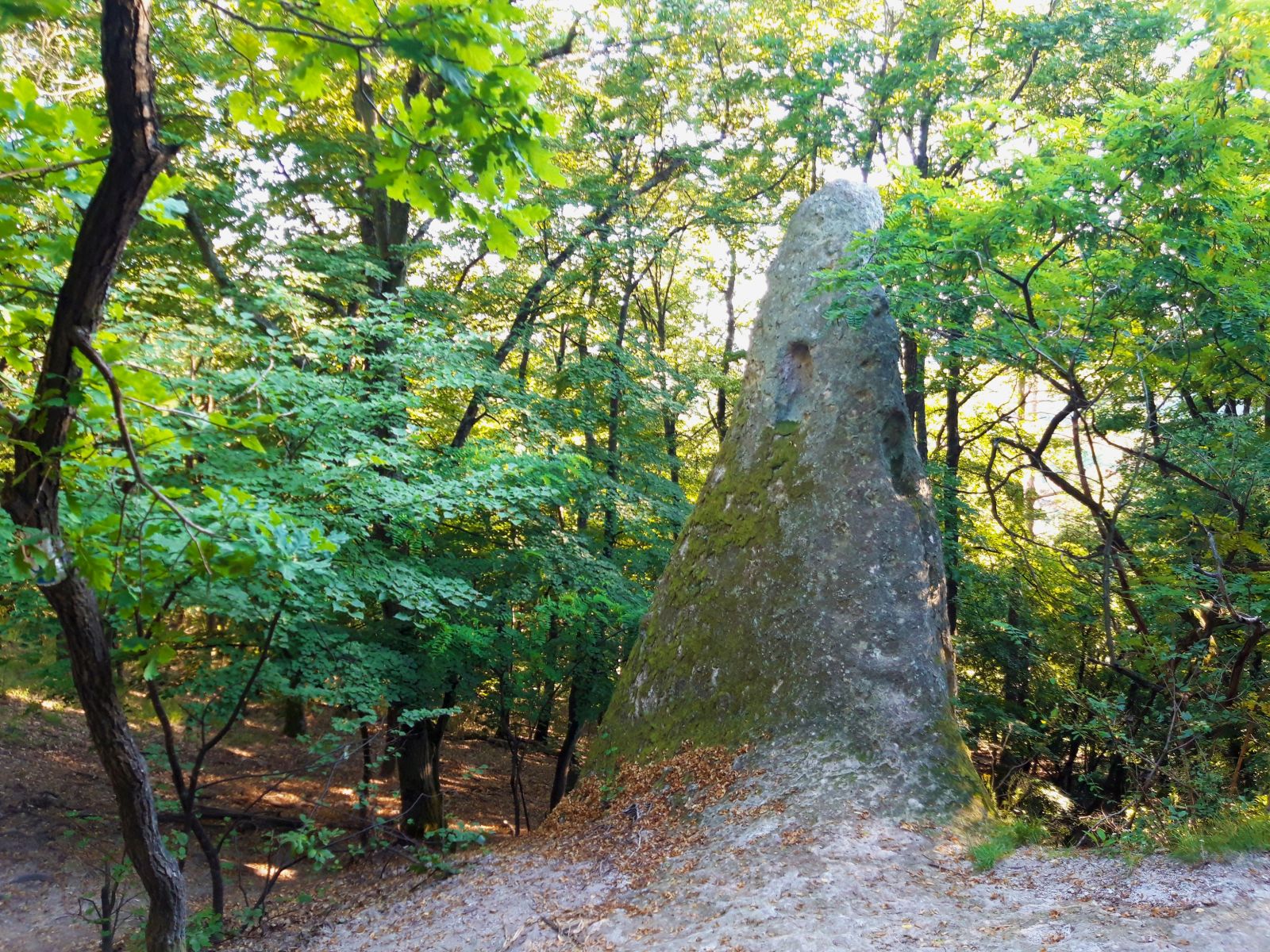
During history they had different names, like stones with dead windows or the bishop’s mitre. On average, the niches are 60 cms tall, 30 cms wide and 25 cms deep. Even today you can see the traces of frames around the windows, so it’s evident that they used to be covered. Archaeologists and historians have been trying to solve the mystery of the beehives, but they are still not sure why people in ancient times carved these holes into the rocks, and when exactly. Of course there are some assumptions and legends: the holes were used for honey making, they were cultic places of worship, or the area was a necropolis.
In the protected area of Szomolya you can visit a group of 8 rhyolite cones with the most niches in Hungary. The most monumental one is called the Királyszéke (Chair of the King) with 48 mysterious holes.
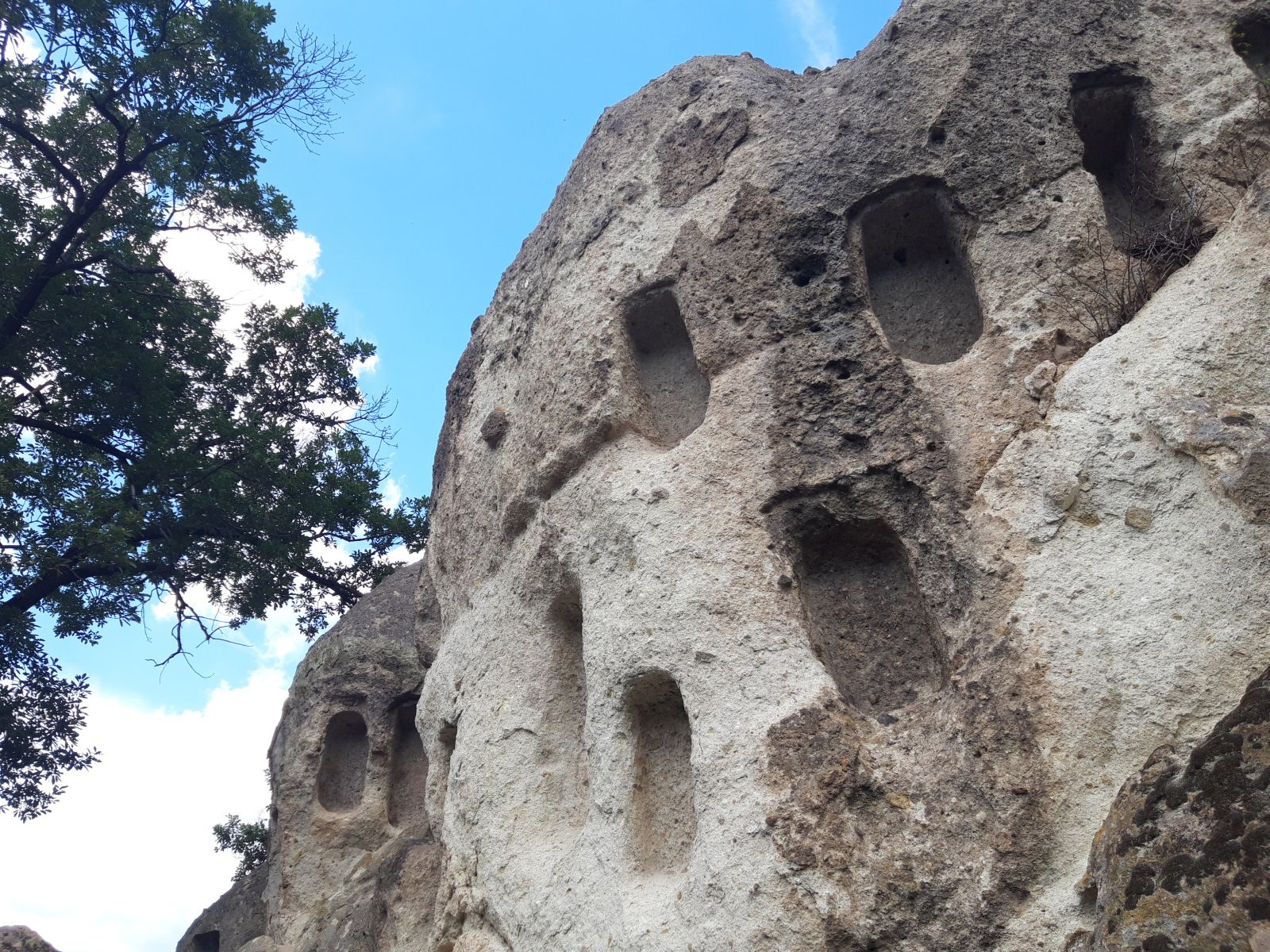
One of the largest beehives of Hungary is hiding in the forest close to Cserépváralja. The Nagykúp (Grand cone) is also called Ördögtorony (Devil’s tower) and has a height of 16 meters. You can count 25 niches on the side of the beehive. Not far from the Nagykúp you can also find the Kiskúp (Small cone) with 5 niches, and there are several other beehives around the village. You can reach them hiking. From the top of the Nagykúp you can also enjoy a great panorama of the valley below.
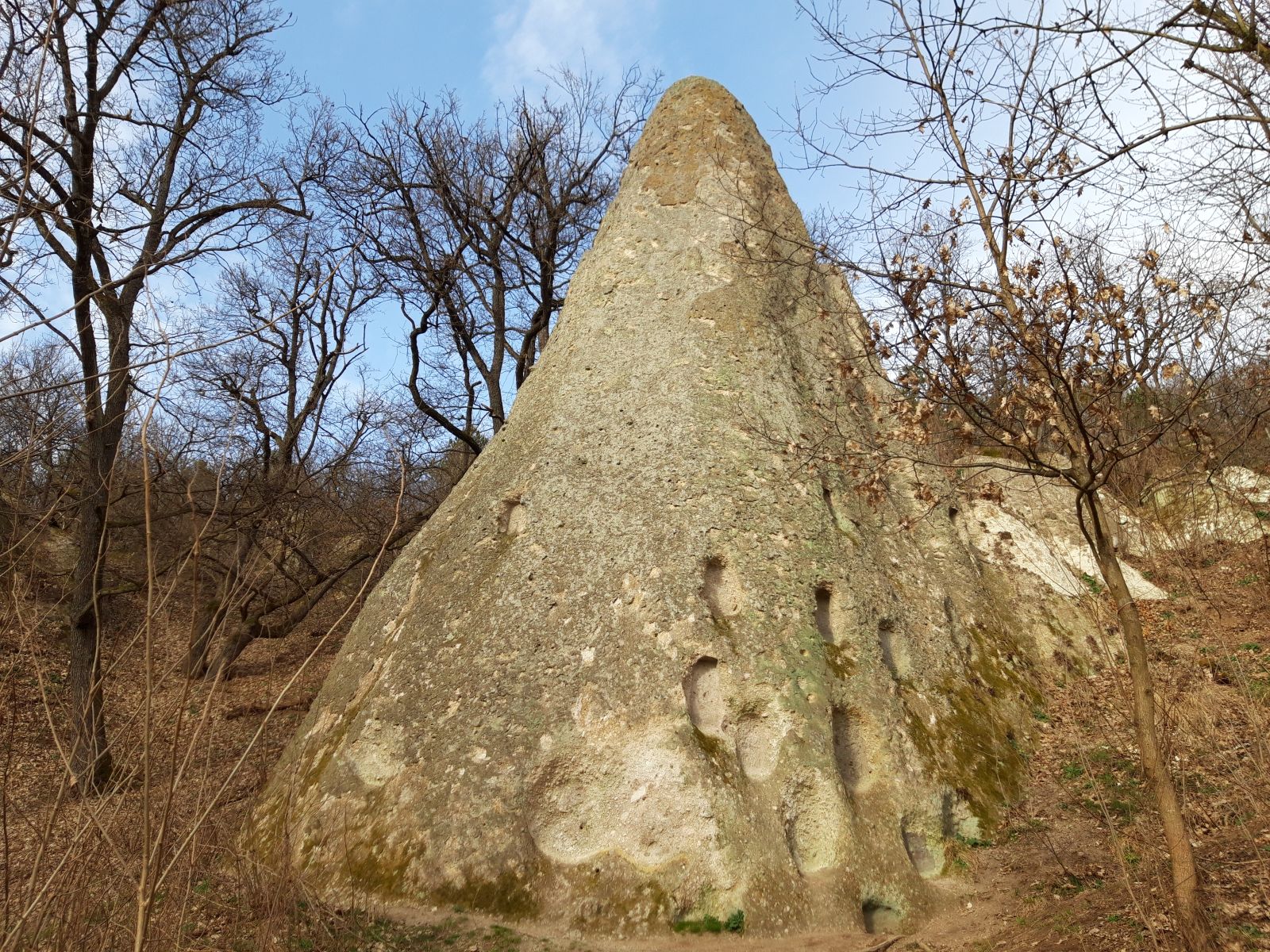
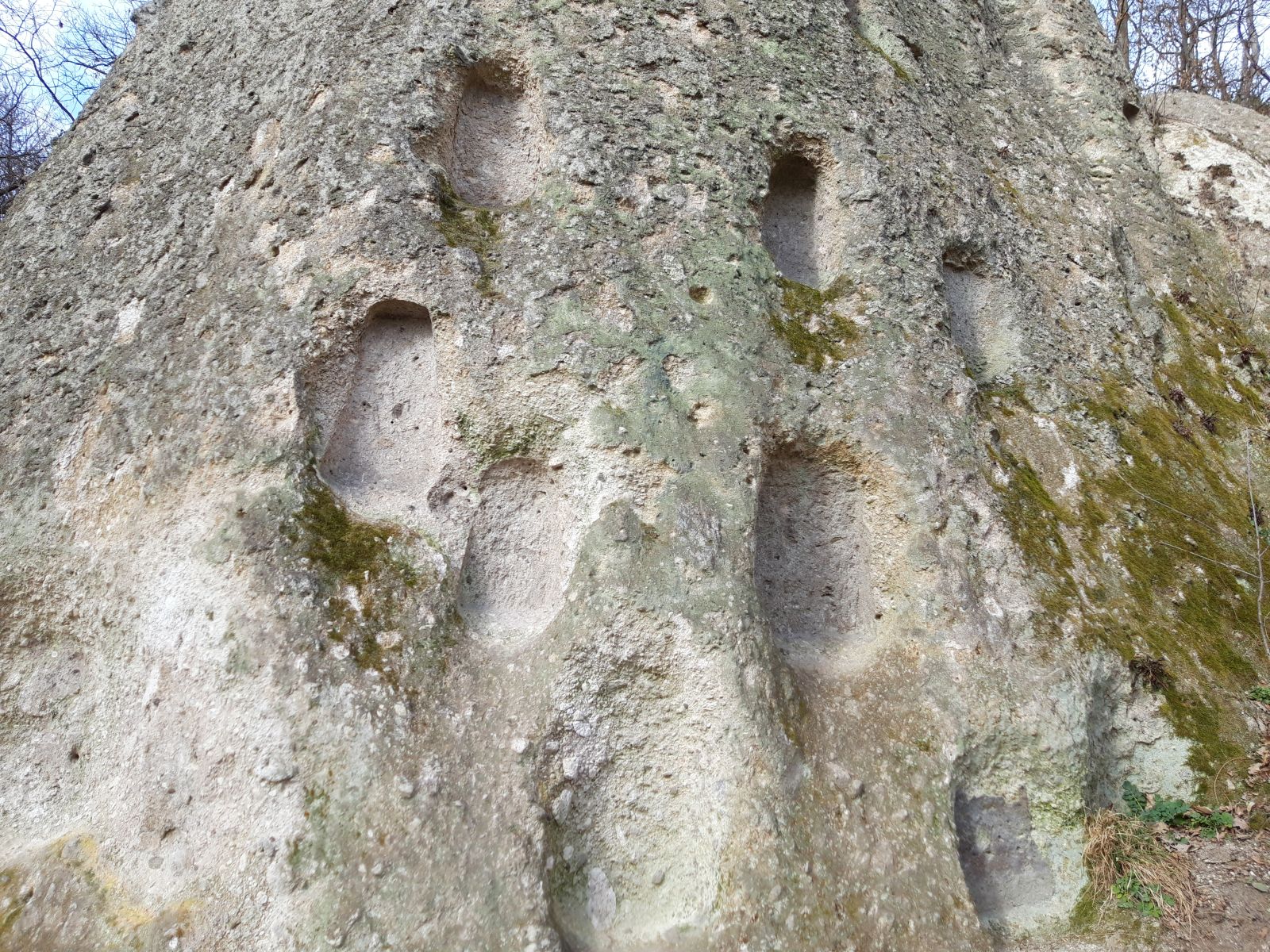
Stone-trail
The Bükkaljai Kő-út (Stone-trail) is a thematic trail, connecting 16 villages. All of them offer you several interesting things to see, partly related to the stone culture. You can hike it all at once, or you can divide it in more sections. (You can also run or bike if you prefer.) You’ll be hiking in an area surrounded by nature, full of cultural sights to see, while you get a chance to enjoy local gastronomy, wine and the hospitality of the wonderful people living here. You can buy a small booklet to collect the signs at the 16 stops, and once you have accomplished the entire trail, you will get a small badge. The villages along the Stone-trail are: Sirok, Egerbakta, Egerszólát, Egerszalók, Demjén, Eger, Ostoros, Novaj, Szomolya, Noszvaj, Bükkzsérc, Cserépfalu, Bogács, Cserépváralja, Tard, Kács.
So as you can see, stone is the main feature in the Bükkalja. We have even found a weather forecast stone by the road, let me translate it for you:
If the stone
is wet, it's raining
is dry, it's not raining
has a white top, it's snowing
can't be seen, it's foggy
is swinging, it's windy
is jumping, there is an earthquake
disappeared, there was a tornado.
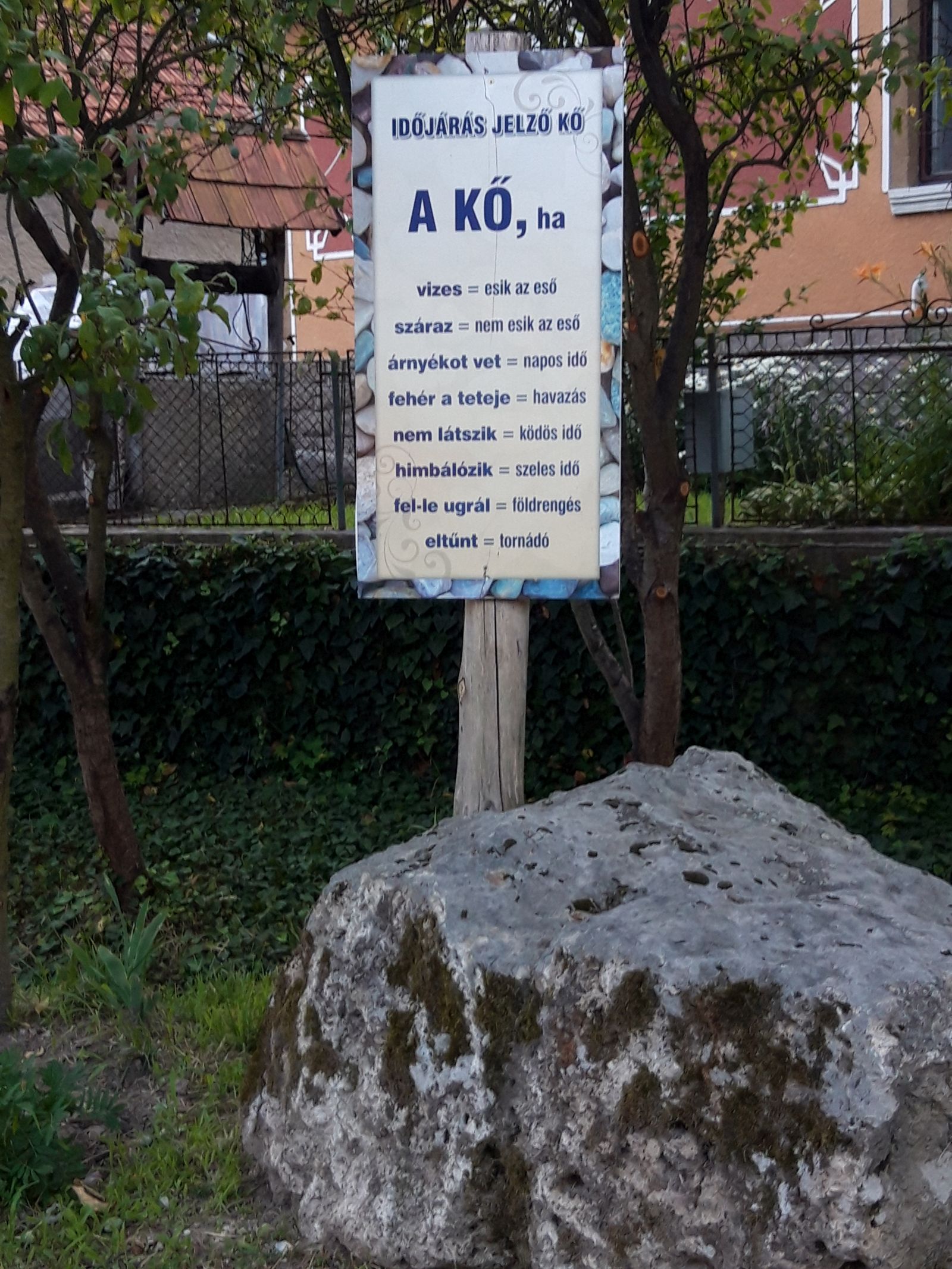
Read more about Bükkalja:
